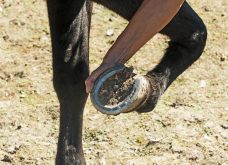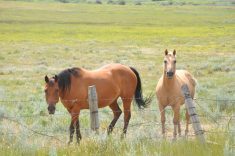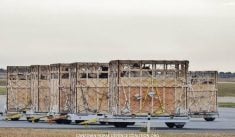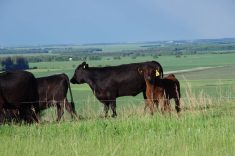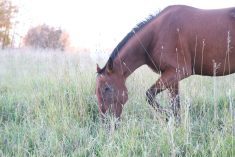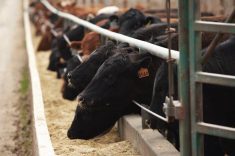Many diagnostic, surgical, and manipulative procedures in horses require an anesthetic to aid the comfort of the horse and improve safety for both the horse and the people handling them.
Often there is a tendency to focus on the medical procedure or operation itself with a lesser regard for the anesthesia. However, it is essential to consider the integral role anesthesia plays in a successful outcome.
Sedation appears to be a very low-risk procedure for the horse whereas general anesthesia carries a greater risk of mortality and morbidity when compared to other commonly encountered species in veterinary medicine.
Read Also

Pig transport stress costs pork sector
Popular livestock trailer designs also increase pig stress during transportation, hitting at meat quality, animal welfare and farm profit, Agriculture and Agri-Food Canada researcher says
Recent studies in North America and Europe have shown the overall death rate following general anesthesia in horses to be 1:100. Dogs and cats assume a favourably lesser risk at 1:1,000 and humans, better yet, with a risk of death of 1:100,000.
Anesthesia describes the insensitivity to pain and external stimulus that is artificially induced by the administration of injectable drugs or inhalation of volatile gases. Veterinarians select tranquilization sedation, local analgesia, injectable intravenous anesthetic, inhaled general anesthetic and/or various combinations to achieve the anesthetic plane necessary to carry out a medical procedure.
For example horses generally require sedation for dental and radiographic evaluations. For a minimally invasive procedure such as repairing a superficial wound, performing a biopsy or removal of a growth, where unconsciousness is not necessary, a veterinarian may choose to combine sedation tranquilization with a local analgesia. When unconsciousness for a medical procedure is required general anesthesia will be necessary. General anesthesia is used for more invasive types of surgeries and/or more painful procedures.
Such examples include castration, fracture repair, or colic. Injectable anesthetics are often used in field situations for castrations, cast application/removal, or for the repair of a complicated laceration. General anesthetics can also be inhaled as a volatile gas through a mask or breathing tube connected to a vapourizing machine. This type of general anesthetic is generally carried out in clinic settings with surgical facilities. Colic surgeries and fracture repairs are most commonly performed under gas anesthesia.
Patients scheduled for anesthesia will be given a complete physical exam to evaluate their health. Pre-anesthetic considerations may include blood work in compromised patients or patients with a medical condition. Whenever a horse is insured it will also be necessary for the horse owners to notify the insurance company prior to anesthetic. In an emergency, notification is best done as soon as is possible to uphold the agreement with the insurance company.
Horses under anesthesia are carefully monitored until the procedure is completed. Blood pressure, eye reflexes, tissue oxygenation, breathing and heart rate are all taken into consideration when assessing the plane of anesthesia. Drug combinations are chosen to optimize their desirable effects while simultaneously minimizing their undesirable side-effects. Most general anesthesia will go very smoothly. Each animal is different requiring constant vigilance and adjustments while under anesthesia.
As with any medical procedure, anesthesia also has its risks. Some patients may react negatively to the anesthetic medication or experience fluctuations in heart rate, breathing or blood pressure. Horses in a similar way to people can also suffer adverse reaction to drugs ranging from a skin rash to death.
It is the horse’s large size which presents the majority of complications when under general anesthesia. When recumbent or laying down for durations of longer than an hour horses tend to experience significant compression of tissues with concurrent inadequate blood supply and oxygenation to muscle groups and vital organs. Lameness, muscle damage, nerve injury, leg bone fractures, colic, and death are unfortunate sequela in which careful measures are taken by the veterinary team to avoid.
When considering an anesthetic, veterinarians take into account the patient’s temperament, tractability and degree of excitement, breed, physiological condition, and state of illness. Then the availability and experience of the personnel involved in the procedure and state of the facilities and environment are assessed. Finally the requirements specific to the procedure will be considered when determining how to proceed with a horse’s anesthetic regime.








